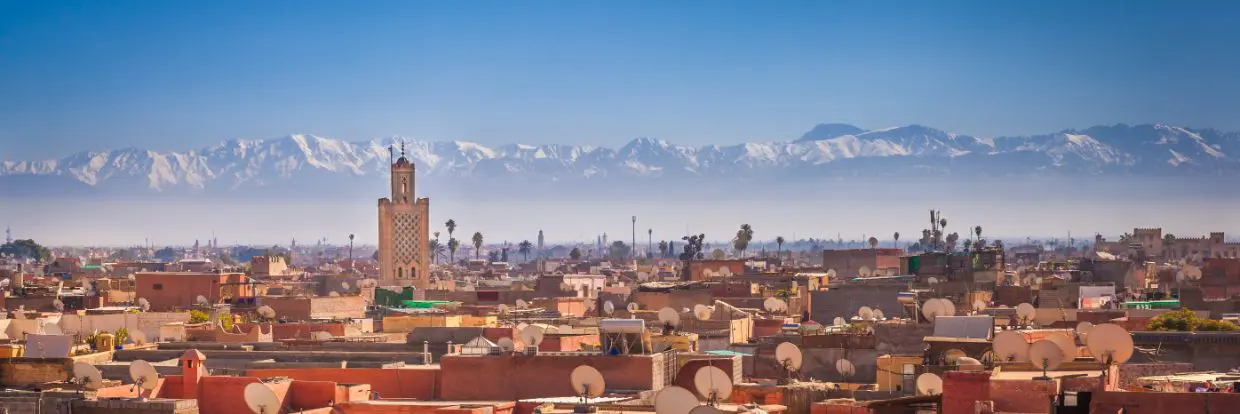How about a trip to Morocco Desert Interior

 A Brief Summary
A Brief Summary
While classified as the desert interior (which is true), this region is also home to the polar opposite climate: High Atlas Mountains. From the craggy snowy peaks in winter, you can look down on the arid sands of the Sahara in one direction and cities like the magnificent Marrakesh in the other. Summers here are utterly rainless and the relief of walking in the mountains is a real draw for many, with accommodation here ranging from the most basic tent, to some truly resplendent multi-star retreats.
The western Sahara’s largest city in Morocco, Ouarzazate, is a quiet and subdued place where you are almost entirely left to your own devices to amble the quaint and rustic back streets of this tan coloured town. Across the mountains, towards the west, you have Marrakesh. Quite the opposite sort of place. While the architecture remains similar, that is just about all that connects these 2 cities. Marrakesh is a loud, noisy, busy, hubbub of a city, where you’ll encounter every colour under the sun in the spice markets and adorning local house walls, as well as the interior walls of many-a-mosque. There are, just outside the city-centre, some beautifully ornate gardens to find some peace and tranquillity from the chaos at the heart of this place. It is well worth a visit to Marrakesh, but it is somewhere you might potentially tire of quite quickly unless you’re mentally prepared for an onslaught on the senses, so perhaps a couple of days here combined with a trip to Rabat, Agadir, Casablanca or Tangier might work well.
 Location
Location

 About the Weather
About the Weather
Marrakesh’s climate, in the more western regions of the desert, is Mediterranean in nature, in so much as summers are hot, dry and very sunny, while winters are mild, bright and the wettest time of year. The differences with Marrakesh’s climate revolve around the extremes, winters are much sunnier than those across the Mediterranean, averaging more than 7 hours sunshine a day, similar to London in May, they are also drier, with only 1 in 4 days on average seeing rainfall from November to April. Summers are, on the whole, slightly hotter than most places in the Mediterranean and during frequent heatwaves, temperatures can come close to 50°c. Spring and Autumn are warm, mostly dry and sunny, with autumn being 2-3°c warmer than spring on average, but slightly less sunny. Further inland, you experience true Saharan weather, with long, hot, sunny days the norm and extreme temperatures from Apr to Sep, often exceeding 40°c and rain in far eastern Morocco is rare
 Travel by Air (from UK)
Travel by Air (from UK)
Direct Flight
Yes
4.5 Hours
(Avg from UK)
 Travel by Air (from UK)
Travel by Air (from UK)
will take approx...
<4 Hours
(Avg from UK)
 Weather Summary
Weather Summary
Average Rainfall
(per month)
32.2mm
Average Sunlight
(per day)
7 (hrs)
Average High Temperature
18.4°C
Average Low
5.9°C
 Cost of living
Cost of living
 Alcohol
Alcohol
 Crime
Crime
 LGBTQ+
LGBTQ+
 Visas
Visas
So does that sound good? If so, it’s time to get booking and get out there!
Trippee is proud to partner with some of the best names in the travel industry, and we only work with accredited and licensed companies so you can always feel safe trusting a link from us.

